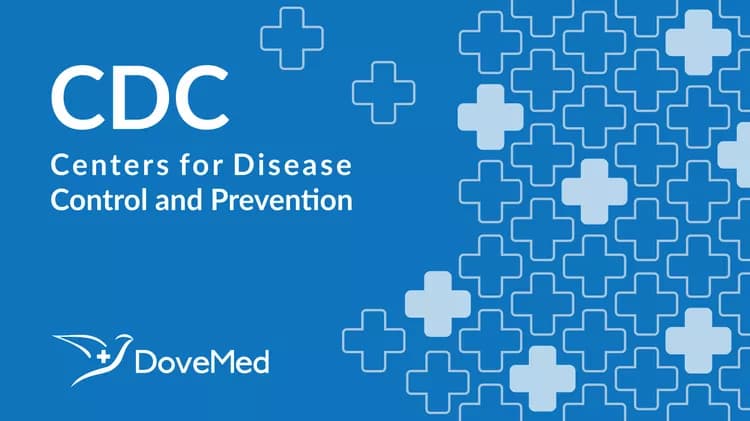
CDC Releases Guideline for Prescribing Opioids for Chronic Pain
CDC Releases Guideline for Prescribing Opioids for Chronic Pain
Recommendations to improve patient care, safety, and help prevent opioid misuse and overdose
As part of the U.S. government’s urgent response to the epidemic of overdose deaths, the Centers for Disease Control and Prevention (CDC) today is issuing new recommendations for prescribing opioid medications for chronic pain, excluding cancer, palliative, and end-of-life care. The CDC Guideline for Prescribing Opioids for Chronic Pain, United States, 2016 will help primary care providers ensure the safest and most effective treatment for their patients.
The United States is currently experiencing an epidemic of prescription opioid overdose. Increased prescribing and sales of opioids—a quadrupling since 1999— helped create and fuel this epidemic.
“More than 40 Americans die each day from prescription opioid overdoses, we must act now,” said CDC Director Tom Frieden, M.D., M.P.H. “Overprescribing opioids—largely for chronic pain—is a key driver of America’s drug-overdose epidemic. The guideline will give physicians and patients the information they need to make more informed decisions about treatment.”
The guideline provides recommendations on the use of opioids in treating chronic pain (that is, pain lasting longer than three months or past the time of normal tissue healing). Chronic pain is a public health concern in the United States, and patients with chronic pain deserve safe and effective pain management. This new guideline is for primary care providers—who account for prescribing nearly half of all opioid prescriptions—treating adult patients for chronic pain in outpatient settings. It is not intended for guiding treatment of patients in active cancer treatment, palliative care, or end-of-life care.
While prescription opioids can be part of pain management, they have serious risks. The new guideline aims to improve the safety of prescribing and curtail the harms associated with opioid use, including opioid use disorder and overdose. The guideline also focuses on increasing the use of other effective treatments available for chronic pain, such as nonopioid medications or non-pharmacologic therapies.
By using the guideline, primary care physicians can determine if and when to start opioids to treat chronic pain. The guideline also offers specific information on medication selection, dosage, duration, and when and how to reassess progress and discontinue medication if needed. Using this guideline, providers and patients can work together to assess the benefits and risks of opioid use.
Among the 12 recommendations in the guideline, three principles are key to improving patient care:
Nonopioid therapy is preferred for chronic pain outside of active cancer, palliative, and end-of-life care.
When opioids are used, the lowest possible effective dosage should be prescribed to reduce risks of opioid use disorder and overdose.
Providers should always exercise caution when prescribing opioids and monitor all patients closely.
“Doctors want to help patients in pain and are worried about opioid misuse and addiction,” said Debra Houry, M.D., M.P.H., director of CDC’s National Center for Injury Prevention and Control. “This guideline will help equip them with the knowledge and guidance needed to talk with their patients about how to manage pain in the safest, most effective manner.”
In developing the guideline, CDC followed a rigorous scientific process using the best available scientific evidence, consulting with experts, and listening to comments from the public and partner organizations. CDC is dedicated to working with partners to improve the evidence base and will refine the recommendations as new research becomes available.
CDC developed user-friendly materials to assist providers with implementing the recommendations, including a decision checklist. These materials, as well as information for patients, are available at www.cdc.gov/drugoverdose/prescribing/guideline.html.
CDC will continue to work with states, communities, and prescribers to prevent opioid misuse and overdose by tracking and monitoring the epidemic and helping states scale up effective prevention and treatment programs. CDC also continues to improve patient safety by equipping health care providers with data, tools, and guidance so they can make informed treatment decisions.
Health and Human Services Secretary Sylvia Burwell has made addressing opioid misuse, dependence, and overdose a priority. Other work on this important issue is underway within HHS. The evidence-based HHS-wide opioid initiative focuses on three priority areas: informing opioid prescribing practices, increasing the use of naloxone (a rescue medication that can prevent death from overdose), and expanding access to and the use of Medication-Assisted Treatment to treat opioid use disorder.
These efforts build on work that began in 2010, when the President released his first National Drug Control Strategy, which emphasized the need for action to address opioid misuse and overdose, while ensuring that individuals with pain receive safe, effective treatment. Also in 2010, the Affordable Care Act improved access to substance use disorder treatment options by requiring coverage of substance use disorder services in the Health Insurance Marketplace and establishing important parity protections to ensure that substance use disorder coverage is comparable to medical and surgical care coverage. The next year, the White House released its national Prescription Drug Abuse Prevention Plan to outline goals for addressing prescription drug misuse and overdose. Since then, the Administration has supported and expanded community-based efforts to prevent drug use and pursue “smart on crime” approaches to drug enforcement, as well as efforts to improve prescribing practices for pain medication and increase access to treatment, to reduce overdose deaths and support the millions of Americans in recovery.
###
U.S. DEPARTMENT OF HEALTH AND HUMAN SERVICES
Related Articles
Test Your Knowledge
Asked by users
Related Centers
Related Specialties
Related Physicians
Related Procedures
Related Resources
Join DoveHubs
and connect with fellow professionals

0 Comments
Please log in to post a comment.